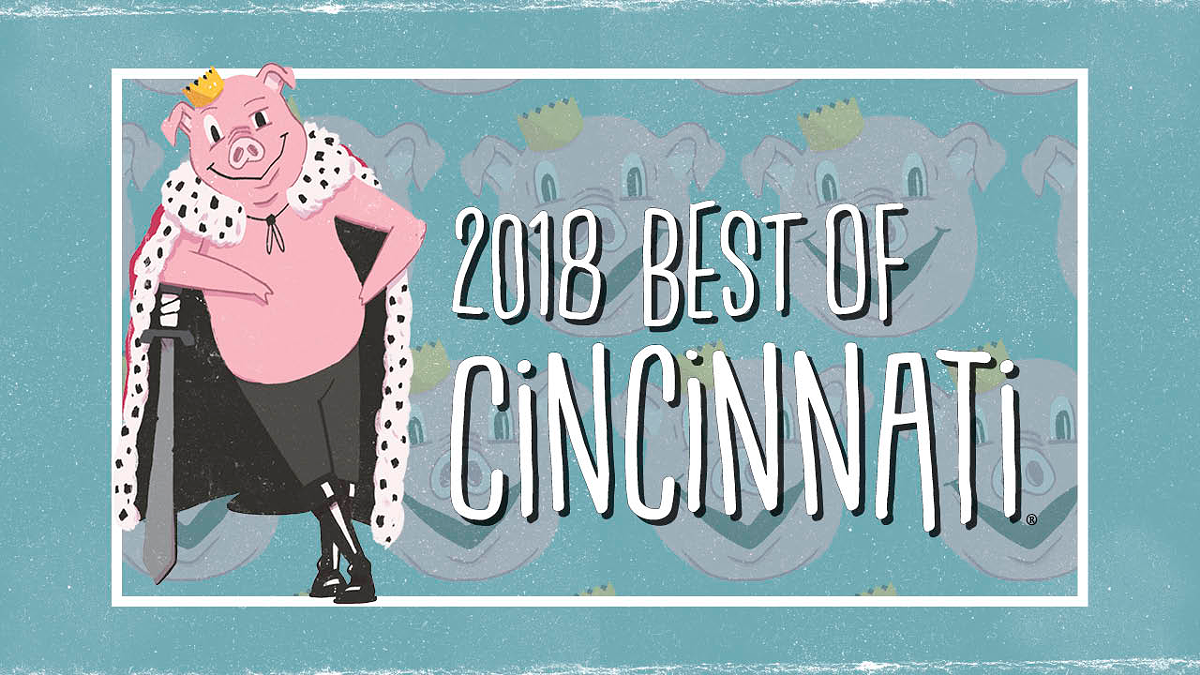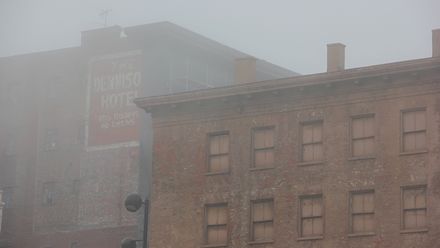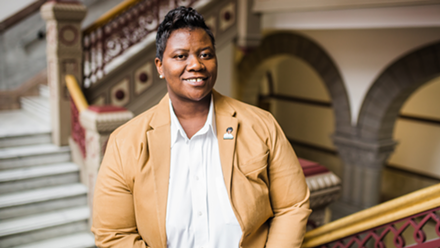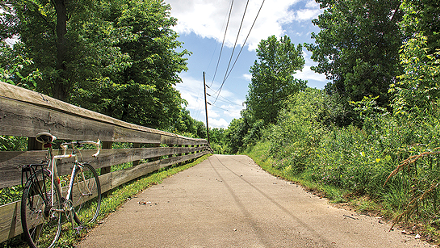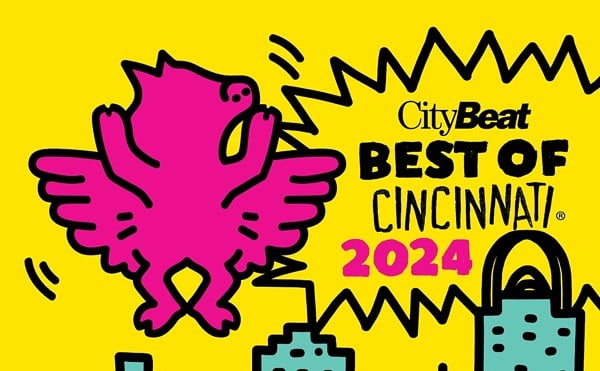McMicken FreeSpace is a volunteer-led, not-for-profit non-hierarchical social center located in the Mohawk-Brighton neighborhood of Cincinnati. The inclusive, comfy spot has been operating since 2015, offering regular programming that caters to those in need of a commercial-free sanctuary. Offerings include meetings for Art of Recovery/Alcoholics Anonymous, Cincinnati Allied Transgender Support and Womxn’s Wednesdays. Stephanie Phillips, building owner and volunteer for the collective space, says that the FreeSpace is sober by default. Volunteers have been involved with efforts like Countdown to Conviction Coalition to convict Ray Tensing for murder in the shooting death of Sam DuBose, and Our Library, Our Decision, which has tried to stop the sale of the Main Library’s North Building. McMicken FreeSpace, 527 W. McMicken Ave., West End, facebook.com/mcmickenfreespace.
2. American Can Lofts
3. Alumni Lofts
Due to an aging fleet and budget constraints, it’s a sad fact these days that you can’t always count on the bus showing up on time in Cincinnati. But here’s something you can set your watch by: Cam Hardy and the Better Bus Coalition he founded will be talking about it. Hardy has done tons of social media activism around Metro’s struggles, highlighting aging buses, riders left waiting in the cold and more in daily posts. But the group takes things several steps further. They’ve engaged residents to create their own roadmap to a better Metro. Don’t be surprised to see Hardy and his comrades out pushing for a levy for Metro this year. And if voters approve that money for the bus system, you may even see some of the coalition’s ideas in action. Better Bus Coalition, facebook.com/betterbusco.
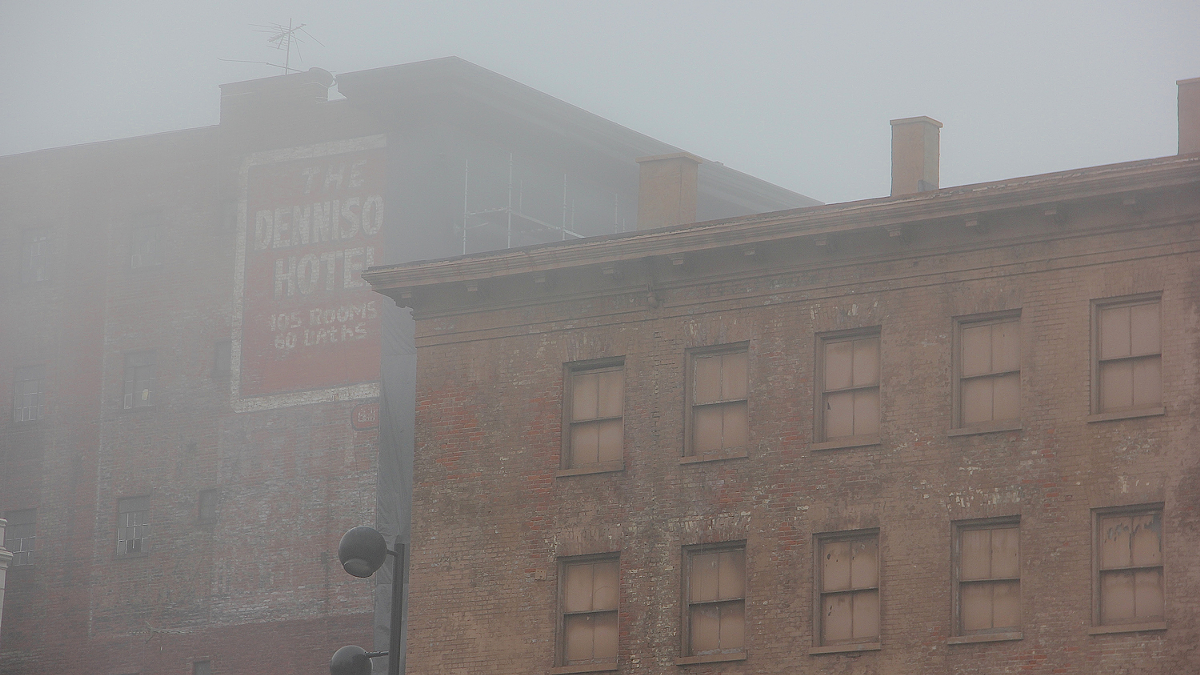
Gone but not forgotten, the Dennison Hotel came down in 2017, leaving a gaping hole in the fabric of downtown Main Street. The building was demolished after a protracted fight the previous year between preservationists, the city and owners the Joseph Family. It was an obstinate old dude: the demolition was slowed multiple times by complications, including the discovery that the Dennison shared a structural wall with a neighboring building. Should’ve just left it up, y’all. Eventually, the wrecking ball prevailed and now all we have left are memories.
The Public Library of Cincinnati and Hamilton County is one of the nation’s most popular and well appointed, and its crown jewel is undeniably its main branch downtown, which stretches over two city blocks along Vine and Walnut streets. So when proposals surfaced from the Library’s Board of Trustees to decommission and potentially sell the north building of the downtown campus, efforts to save the building were swift. After some tense meetings, protests and news conferences, activists with the Our Library, Our Decision Coalition got the news they were waiting to hear: Library trustees have pledged not to sell the north building.
By his own telling, Cincinnati City Councilman Charlie Winburn was Freddie Kruger, and he could always rise to the occasion because he did his homework. Wait, what now? During long legislative debates last council term, the Republican chair of the powerful Budget and Finance Committee could always be counted on for commentary. Some of it was insightful. Some of it was confusing — we still have no idea why he would occasionally compare himself to an ’80s horror movie character. But all of it livened up the sometimes-frustrating proceedings, even when the subject of discussion was the time the FBI seized several cardboard boxes from Winburn’s storage unit in the basement of City Hall. Nothing incriminating came from that investigation, but Winburn got yet another catchphrase — “Box Gate” — out of the incident.
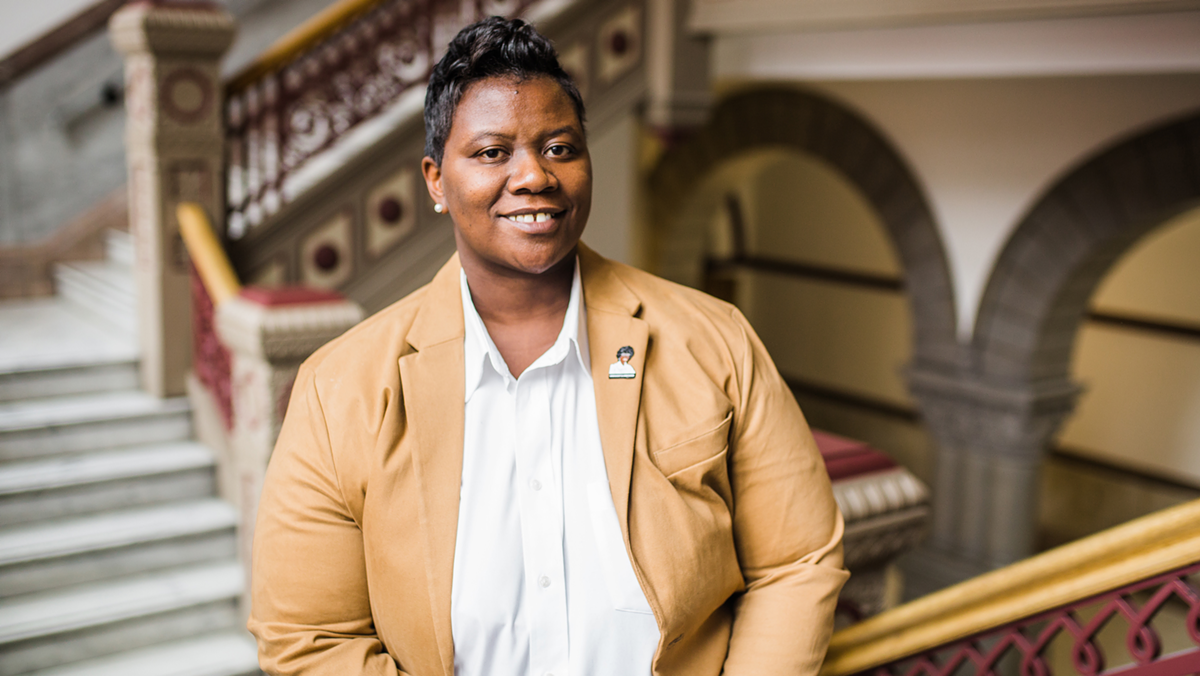
Every Cincinnati City Council election cycle brings out some interesting efforts to win voters’ attention and hopefully their checkmarks at the ballot. But Tamaya Dennard’s campaign — in which she held kickball games, wine and postcard-writing nights and spoke to residents of Cincinnati neighborhoods at events staged on their neighbors’ porches — was especially unique and, if we dare say so, authentic. Dennard’s enthusiasm for people and her compelling story made the usual campaign fare — flashy ads and ubiquitous parade appearances — seem flat by comparison. The work seems to have paid off. Dennard now sits on City Council.
Former U.S. House Speaker John Boehner, a hometown guy, was never the most taciturn of lawmakers. He was known to tear up on many an occasion during his tenure. But as it turns out, he was really holding back a lot. When he was forced to retire due to a rout by unruly tea partiers in Congress, he unloaded in a very long, very personal Politico story to the amusement and amazement of all but some of his former colleagues, whom he called “assholes,” “legislative terrorists” and worse. He even had some brutally honest words about President Donald Trump, calling situations at the White House at the time “a shitshow.” Tell us how you really feel, John.
We held our breath when we found out that purveyor of high-quality long-form journalism Cincinnati Magazine was up for sale last year, and breathed a brief sigh of relief when we heard it got new owners in the form of Hour Media. Hour publishes more than 70 titles, including, randomly, Jewel of Palm Beach, which bills itself as “the exclusive publication of Donald J. Trump’s spectacular Mar-a-Lago Club.” Sadly, the new owners dumped some of our local monthly’s most talented staffers. But new Editor-in-Chief John Fox (a CityBeat founder) seems to be keeping the mag on the right track in the aftermath. Cincinnati Magazine, cincinnatimagazine.com.
In January 2017, local faith leaders began signing on to Cincinnati’s new sanctuary movement — an interfaith effort that seeks to provide legal protection, shelter and other aid for undocumented immigrants and vulnerable groups. The movement comes after the election of President Donald Trump, who promised waves of mass deportations of undocumented immigrants, Muslim registries and bans on refugees from countries suffering from terrorism. Organizers with the Amos Project quickly announced a half-dozen congregations representing Islam, Judaism and Christianity were ready to become sanctuary sites— those willing to host undocumented people in their buildings — or solidarity congregations willing to provide other kinds of support to vulnerable people seeking refuge in the United States.
We could all use more good news about female leadership in our lives, especially these days. Enter Women of Cincy, a community group that started in January 2017 to showcase women doing good work and celebrating their achievements via the group’s website and social media accounts. One year later, that much-needed celebration continues. The group has highlighted the work of tons of local women via profiles and interviews, and recently stepped it up a notch with a podcast series exploring the diversity of the female experience called, “What is a Woman?” Here’s to many more years of strong, diverse Cincy women. Women of Cincy, womenofcincy.org.
The City of Cincinnati’s move toward renewable energy is an encouraging, ongoing effort to do our part in avoiding a grim environmental future. The city has achieved an 18.4 percent reduction in greenhouse gas emissions since it started measuring those emissions in 2006, and also recently built one of the country’s first net-zero energy use police stations and greatly increased the use of solar panels and other renewable energy technology. Late in the year, city officials signed a contract that will provide 100 percent renewable energy to many city buildings and functions, saving the equivalent of 650,000 trees or 28 million pounds of coal a year. And the efforts aren’t done yet: Officials have set their sights on making all municipal energy use green-friendly by 2035.

Findlay Market’s Fresh Table owners and chefs Meredith Trombly and Louis Snowden want you to cook your own food, too. And you can get the ingredients at their new Epicurean Mercantile Company, which is located just across from the Findlay Market streetcar stop on Race Street. Trombly and Snowden pondered the venture for years, and when developers Model Group offered a space uniquely positioned to complement Findlay Market, they jumped on the opportunity. The name sounds fancy, but Trombly and Snowden say they want to serve the entire community at all price points, stocking items that round out Findlay Market’s offerings from budget brands to boutique treats while participating in SNAP and EBT programs. The urban grocery also has an in-house eatery, The Counter, offering dine-in or carry-out small plates and entrées. Epicurean Mercantile Company, 1818 Race St., Over-the-Rhine, emcotr.com.
Urbanists and city elected leaders have salivated at the idea of a downtown Kroger for years — the city’s last one, a Kroger on Race Street, closed in 1969 — but before now, the pieces had never come together. In 2017, the Cincinnati-based grocer announced it will partner with the city to build a 45,000-square-foot, two-story downtown Kroger location as part of a mixed-used development at the southeast corner of Central Parkway and Walnut Street. That development will also include an 18-story, 139-unit market rate apartment tower and a 550-space parking garage. Kroger says the store is meant to serve customers living in downtown, OTR, the West End and other nearby neighborhoods and will feature a bar, food court and other novel amenities. Kroger, kroger.com.
Used to be, if you wanted to get produce or some great meat or spices at Cincinnati’s oldest and best market, you had to scurry out on your lunch break or wait until the weekend. But this past summer, that changed thanks to late night Wednesdays at Findlay Market. Shops at the Over-the-Rhine landmark were open between May and September until 8 p.m. on hump day, giving you the chance to refresh your stock of greens or grab some fresh salmon for dinner. With more and more folks in and around the city’s urban core, it was a needed extension. Here’s hoping it happens again in 2018. Findlay Market, 1801 Race St., Over-the-Rhine, findlaymarket.org.
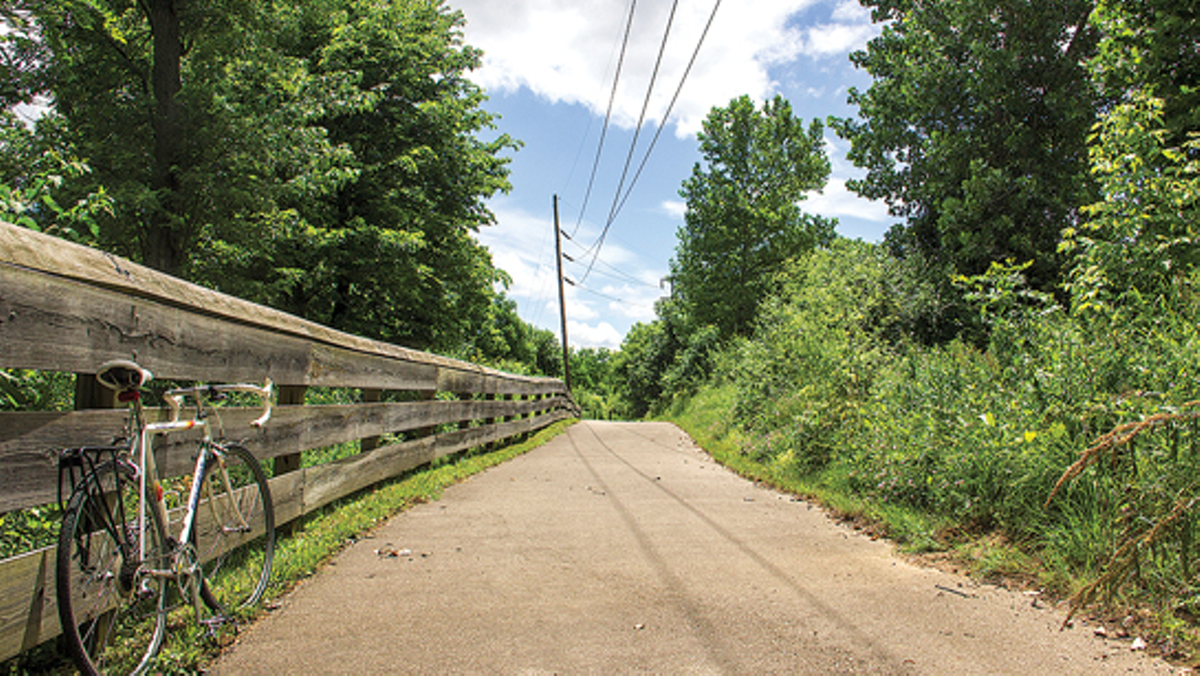
What if you could hop on a bike trail just about anywhere in the city and connect to a network of trails that would take you just about anywhere else in Cincinnati? Queen City Bike, Red Bike, Tri-State Trails and the Urban Basin Bicycle Club joined forces back in September to advocate for just such a proposal. The project, called CROWN (Cincinnati Riding Or Walking Network), would finish the city’s four major in-progress trails and link them with six new connector trails, all while integrating much of the city’s 2010 bicycle transportation plan calling for increased bike lanes throughout the city. The idea has more than recreational merit: It could make it easier for low-income folks without cars to get around safely. CROWN, greenumbrella.org/tristatetrails-crown.
Is activist investor Nelson Peltz a visionary with new ideas to unlock untold profits from one of Cincinnati’s largest companies? Or, as critics might suggest, is he a pirate roaming the corporate seas looking for a bounty on a prominent merchant ship? That’s the crux of the controversy surrounding Peltz’s drive to jump onto the board of Procter & Gamble, and it looks like we’ll get answers eventually. Peltz fought the most expensive proxy fight ever — one that essentially ended in a tie. After that battle, P&G made a seat for him on its board. Some leaders at the company say Peltz is only worried about short-term gains, while Peltz says he has some ideas for making the consumer-goods behemoth more efficient and delivering more profits to P&G stockholders. Peltz’s Trian Fund Management has major interests in that goal, owning $3.5 billion in P&G shares.
Phew, y’all. For a minute there, we didn’t think we’d get through the 2017 mayoral race between Mayor John Cranley and Cincinnati City Councilwoman Yvette Simpson. The contest pitted two powerful intellects and personalities against each other in a knock-down, drag-out brawl over the future of the city. Never before has a hospital expansion been so charged and so debated, and never before have the minutiae of the city’s contracting policies been so interesting and pivotal. Simpson, branding herself as the more progressive candidate, took on an incumbent who presided over a period of rapid growth for Cincinnati. In the end, Cranley prevailed, but not before his challenger gave him the run of his life.
Where to start with the amazing dysfunction at 1600 Pennsylvania Ave.? (We’re talkin ’bout Trump here, people). There was his messy move just weeks into his presidency to limit travel from countries that are majority Muslim, a hastily drafted executive order that federal courts quickly slapped down. Then there were the staff squabbles and change-ups in the White House itself, which eventually led to Trump’s once-trusted advisor Steve Bannon going rogue and badmouthing his former boss to journalists. Oh yeah, don’t forget the investigation by special counsel Robert Mueller, which has already resulted in indictments of key Trump campaign folks like Paul Manafort. Pop some popcorn: This soap opera looks like it’s got a few more seasons left in it.

